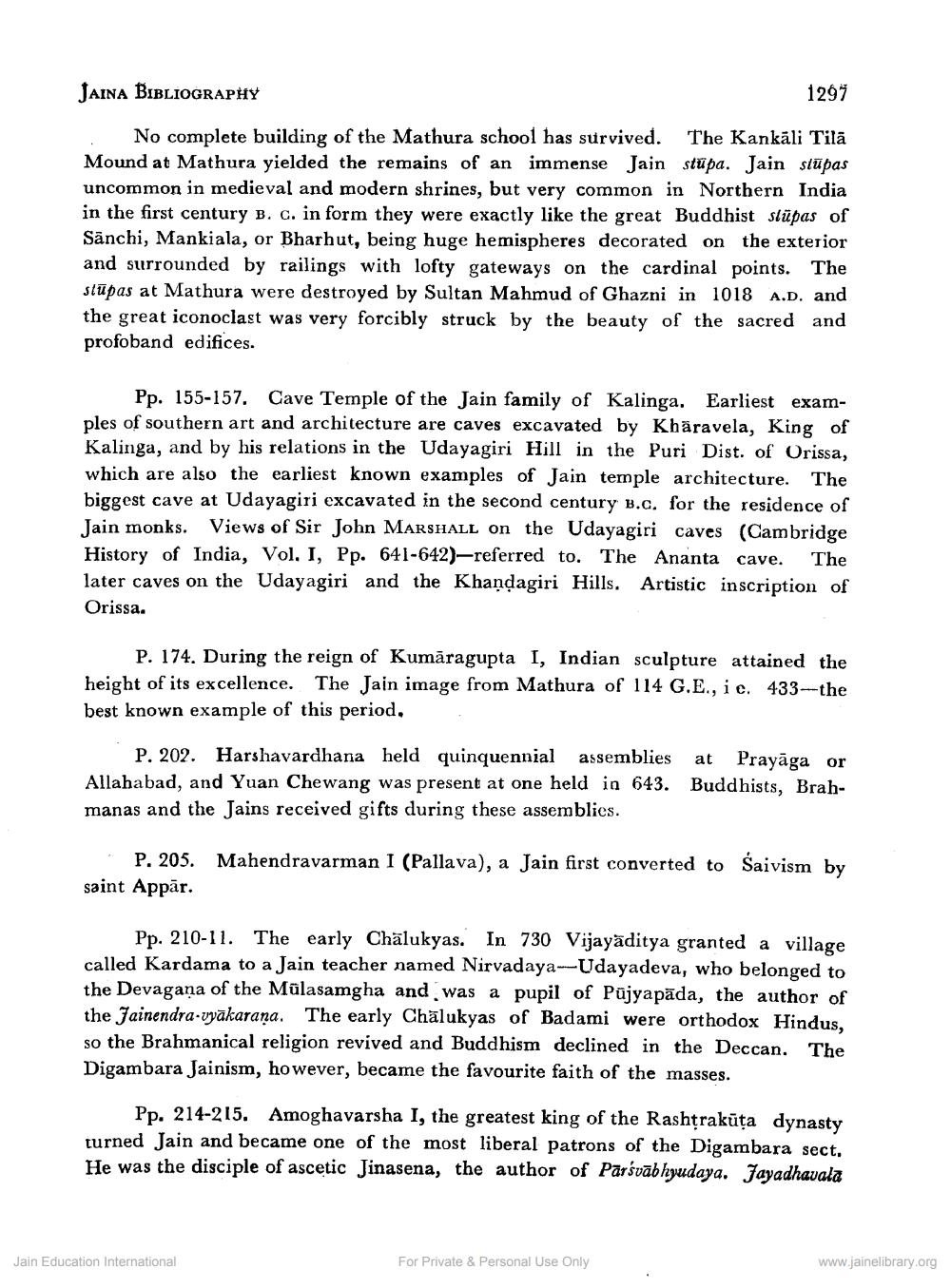________________
JAINA BIBLIOGRAPHY
1297
No complete building of the Mathura school has survived. The Kankāli Tilā Mound at Mathura yielded the remains of an immense Jain stupa. Jain stupas uncommon in medieval and modern shrines, but very common in Northern India in the first century B. c. in form they were exactly like the great Buddhist stupas of Sanchi, Mankiala, or Bharhut, being huge hemispheres decorated on the exterior and surrounded by railings with lofty gateways on the cardinal points. The stupas at Mathura were destroyed by Sultan Mahmud of Ghazni in 1018 A.D. and the great iconoclast was very forcibly struck by the beauty of the sacred and profoband edifices.
Pp. 155-157. Cave Temple of the Jain family of Kalinga. Earliest examples of southern art and architecture are caves excavated by Kharavela, King of Kalinga, and by his relations in the Udayagiri Hill in the Puri Dist. of Orissa, which are also the earliest known examples of Jain temple architecture. The biggest cave at Udayagiri excavated in the second century .c. for the residence of Jain monks. Views of Sir John MARSHALL on the Udayagiri caves (Cambridge History of India, Vol. I, Pp. 641-642)-referred to. The Ananta cave. The later caves on the Udayagiri and the Khandagiri Hills. Artistic inscription of Orissa.
P. 174. During the reign of Kumaragupta I, Indian sculpture attained the height of its excellence. The Jain image from Mathura of 114 G.E., i c. 433-the best known example of this period.
P. 202. Harshavardhana held quinquennial assemblies. at Prayaga or Allahabad, and Yuan Chewang was present at one held in 643. Buddhists, Brahmanas and the Jains received gifts during these assemblies.
P. 205. Mahendravarman I (Pallava), a Jain first converted to Saivism by saint Appăr.
Pp. 210-11. The early Chalukyas. In 730 Vijayaditya granted a village. called Kardama to a Jain teacher named Nirvadaya-Udayadeva, who belonged to the Devagana of the Mülasamgha and was a pupil of Pujyapada, the author of the Jainendra-yakarana. The early Chalukyas of Badami were orthodox Hindus, so the Brahmanical religion revived and Buddhism declined in the Deccan. The Digambara Jainism, however, became the favourite faith of the masses.
Pp. 214-215. Amoghavarsha I, the greatest king of the Rashtrakuta dynasty turned Jain and became one of the most liberal patrons of the Digambara sect. He was the disciple of ascetic Jinasena, the author of Parivablyudaya. Jayadhavala
Jain Education International
For Private & Personal Use Only
www.jainelibrary.org




